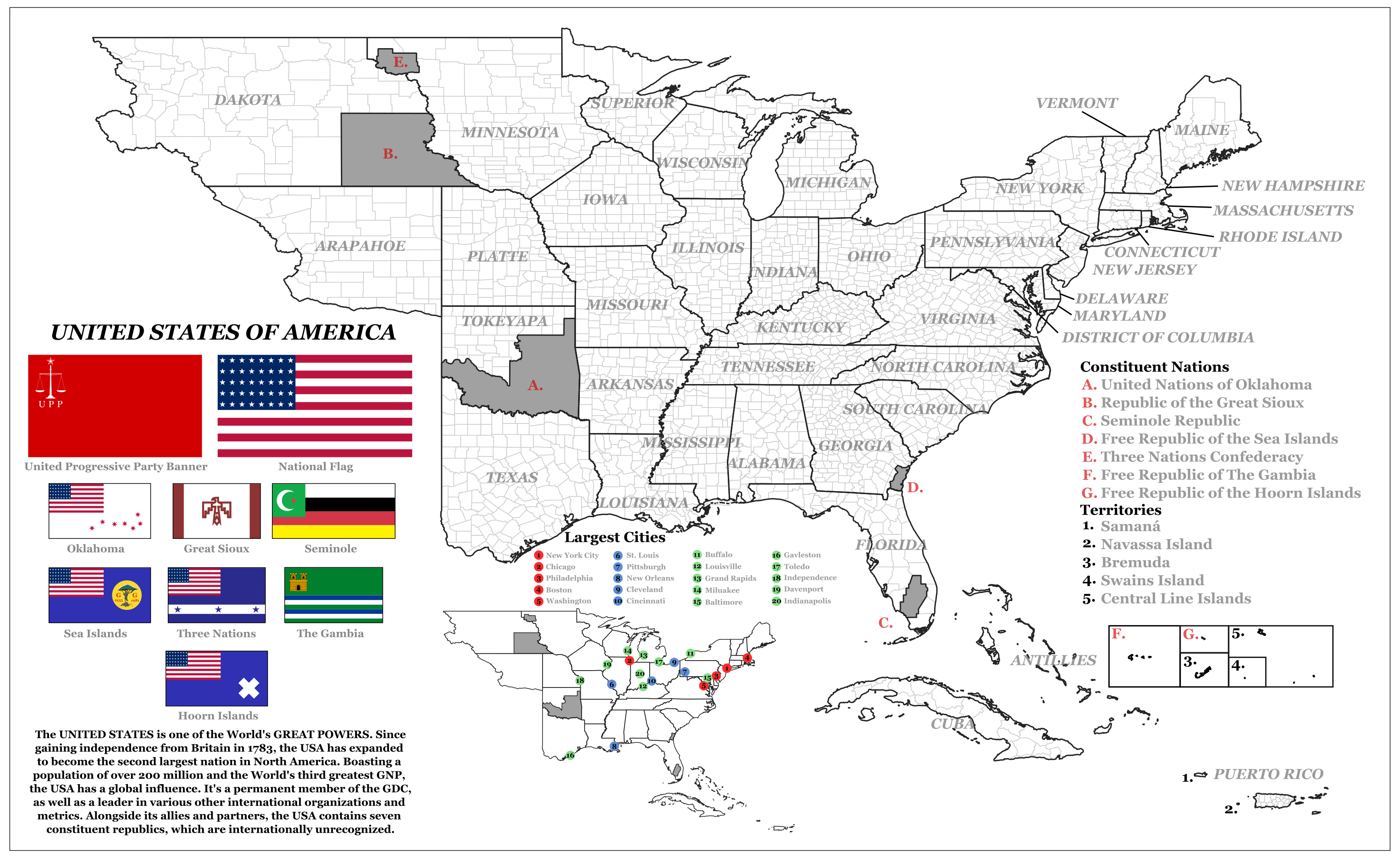Is that a ONE BILLION population drop in a few years? Did a semi-global (aka Cuban crisis-level, not IRL 80s) nuclear war happen?
Very interesting map
Thanks! ITTL there was a greater focus on chemical and biological weapons and an arms race between the major powers in the first half of the 20th century for their development (without a world-level conflict until the 40s there are no blanket bans on such weapons). As a result, the widespread use of these in war quickly outstrip their intended use and kill a third of the global population. Because they aren't as flashy or immediately devastating as Nukes, they are used more liberally until their use spirals into a global threat.
What's with the season framework in the global population map?
The incredible destruction of the Great War (1949-55) and subsequent diseases gives credence to the idea of a 'civilizational cycle' theory in Western Europe (and to an extent North America), wherein civilizations undergo 'seasonal epochs' of development, and a chronology is formed by the French and subsequent B.N.E.E. trying to quantify these epochs. The idea of dividing human history into 'epochal ages' was not uncommon in Western Christianity in the past, so its not too much of a leap. Of course, the resulting 'seasonal calendar' only takes into account Western European and some Middle Eastern events, and so is only commonly adopted by certain European countries (and some Francophones in the US and elsewhere).
How does kurultai democracy, popular democracy and Ama-Ala work?
The original Kurultai was a sort of elective body that would issue edicts and serve in a similar way to the Icelandic thing and other systems (its still used as a sort of ritual / social festival OTL across Central Asia and as far as Hungary, although the word itself is Mongol in origin). Effectively, Kurultai's work similarly to parliaments, although they more often use functional constituencies (often taken from certain councils). Kurultai democracies are also very multilayered, where certain members of the National Assembly would be elected from local assemblies and there from mayors, trade unions, universities, fraternities, and other bodies. National assemblies tend to elect a provisional leader (or leaders), so in that way it functions similar to Parliaments that elect a president. The actual functioning of this system varies greatly from country to country, but in Oregon it is similar to a parliamentary system, where a proportional number of Assemblymen are elected from each department, and elect a 'Speaker' who functions as a head of government. These systems can also have sovereign or implied of heads of state (the Pamir states use a varient of Kurultai, but are also monarchies so are marked so on the map).
Popular Democracy is ideally a system akin to the ancient Greek 'democracy' system, or mob rule (as it is also called). As few if any of the states labelled 'popular democracies' actually function in that sort of sense, it is kind of an arbitrary term that could be comported with Kurultai democracies. In the case of the B.N.E.E and its allies, it describes their 'body' system, where the state is technically a single individual made up of cells who ideally have a coequal relationship with eachother and together make policy for the survival of the body as a whole. In reality, these states are run by 'Neurons' which run a sort of command economy, and 'Leukocytes' to purge 'infections' in the body, and the average cell does not have all that much of a say in governance. Popular Democracy is not all ultra-authoritarian Hobbesianism though, places like Mulkistan do
de jure function on public referenda and a nationally inclusive legislature.
De Facto, the government type labels don't mean all that much to the nature and functioning of the states themselves, as the situation is always more complicated individually. Certain Popular Democracies could be considered one-party states for example, although these can't be considered to close to political parties in the OTL representative democracy sense, and more like Gadhafi-style personalist organizations and the like.
The system of Ama-ala originated OTL among the diffuse organization of Igbo villages and towns. Each village would be relatively autonomous, and be ruled by a council of people chosen in several different ways. One important aspect of this system was the 'village strike,' where villagers would refuse to do work if the council moved too far against their interests (OTL this was cracked down on by the British and more organized Igbo authorities). In the absence of direct colonialism and the rapid development of the Bight of Benin region, this political ideology spreads across much of West Africa. In the modern day, many of the cities in the 'Uwa Ama Ala' function in a mandala-like system, where each major city functions as a public corporation, and citizens participate in something akin to workplace democracy. Through cycles of investment, competition, and resource development, many of these cities have become highly rich and influential, with some (like Porto-Novo) enough to merit inclusion as a separate 'state' on maps. In reality, most of these polities do not function like a Westphalian state system, and the Uwa Ama Ala especially doesn't, although the alternative is hard to map, and this map (being made in a 'Western' context ITTL) chooses to oversimplify. It should be noted that certain places in West Africa, such as the Yoruba kingdoms do function similarly to states (not nation-stated though, the Yoruba nation is a shared thing). Soudan could also be considered an Ama-ala system, although its mandala components technically have a rotating central government and are an established confederation, so it's marked differently.


